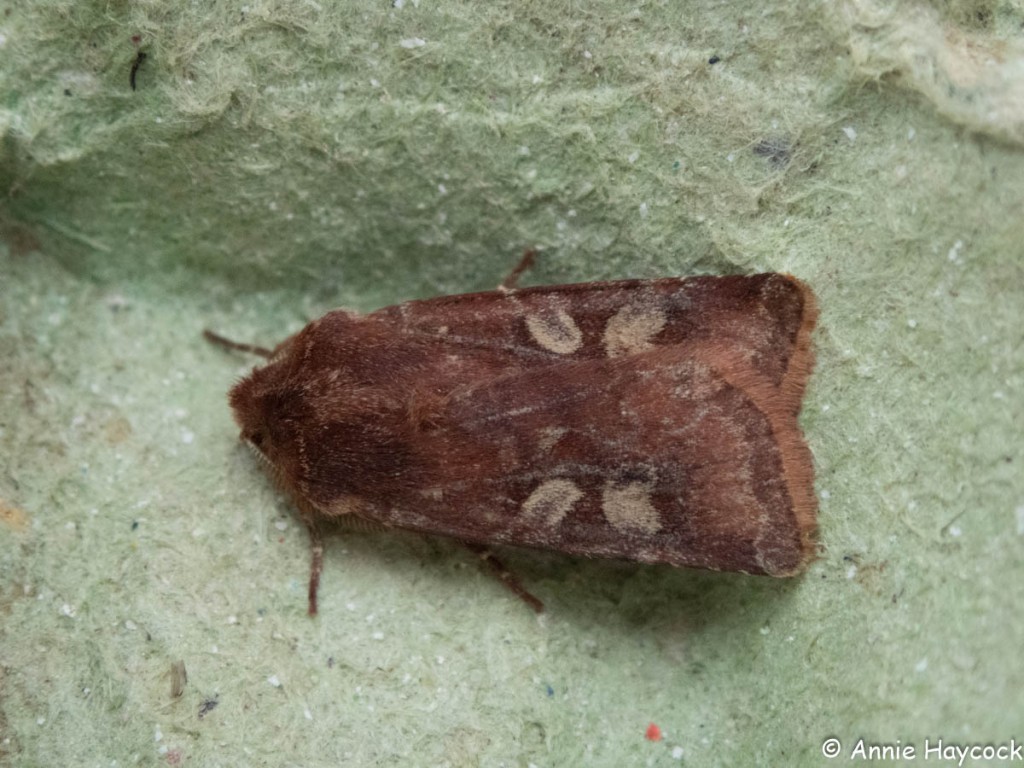Saturdays start with emptying the moth trap in the garden. March was disappointing, but today we did have a handful of moths – despite the rain.

The Early Moth is usually on the wing in January and February, though a few seem to hang around into March and even early April. This one is a male – the females are almost wingless. It’s quite common in England, Wales, Ireland and the south of Scotland, occupying woodland margins and hedgerows, where the caterpillars feed on hawthorn and blackthorn.

The white-marked usually flies in March and April, but it seems little is known about its life cycle. The caterpillars have been kept in captivity on willows and various herbaceous plants, but exactly what they do in the wild is still a mystery.
11:30. Castlemartin Range West looks grim and desolate – the effect of winter winds and salt spray.

A shag on the rock below seems nervous at my silhouette. Another one flies by, and decides to keep going. Rock pipits flit along the cliff tops. A pied wagtail called as it flies to the lookout, and then back a minute later. A cormorant flies past, low over the sea, lumbering compared with the lighter-weight shag.
11:45 The temperature drops, and then the rain starts. Not heavy, but cold wet and persistent. A fulmar flies small circuits by the cliff – checking out this strange object on the cliff top – before flying off out to sea. Its mate and another pair stay on their ledges. An oystercatcher flies low over the rocks, calling. Herring gulls pass by, calling hoarsely, at cliff-top level. A gannet passes by further out to sea.

12:00 I’ve not seen a chough, nor has Bob at another regular nest site not far along the coast. He drives to the next site, while I walk – I need to warm up. A few wheatears move ahead of me.
12:30 Still no chough. Still raining. We drive on eastwards, passing a raven and a peregrine. Eventually we see two choughs.
12:40 The rain has stopped
